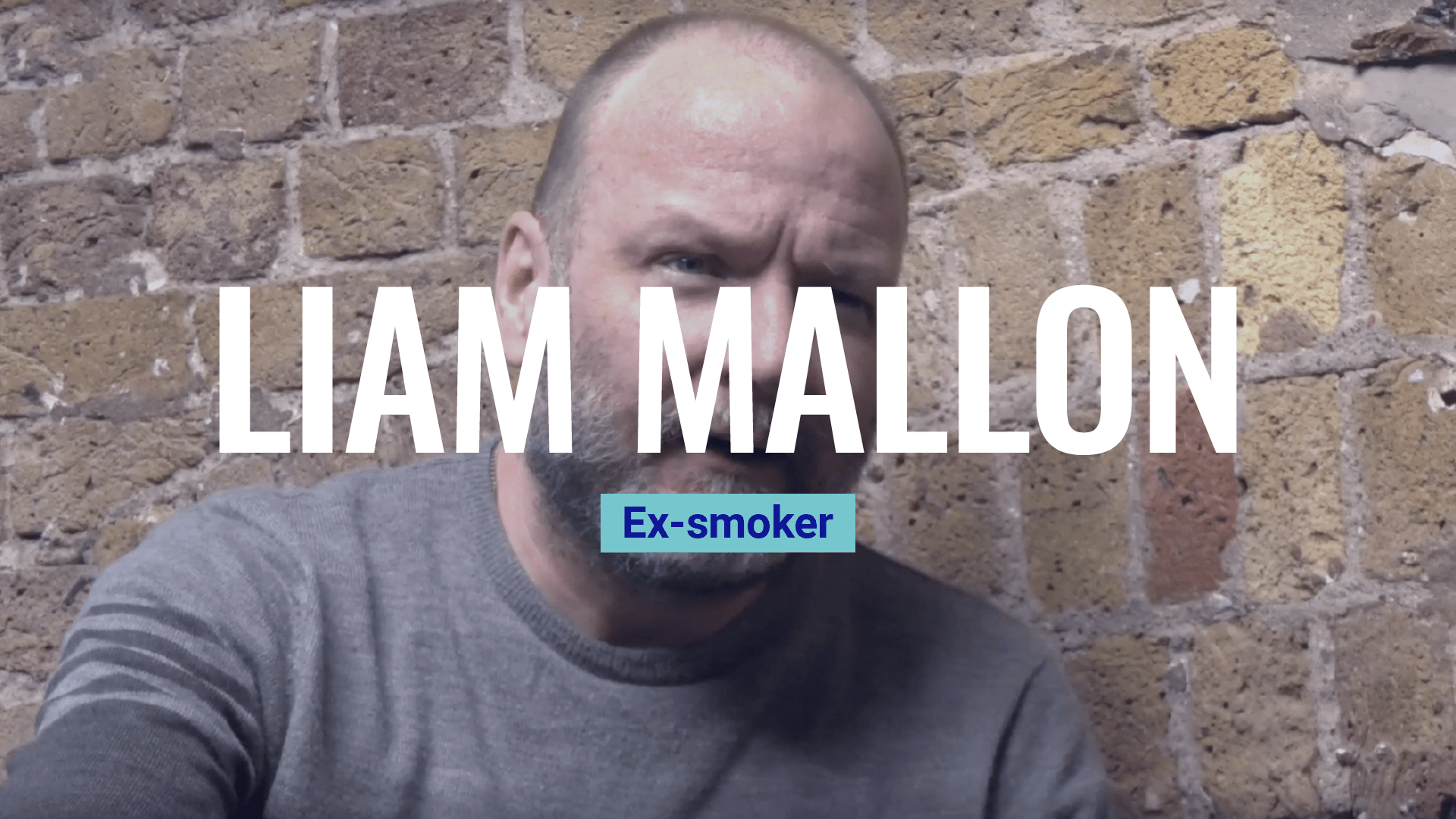Is vaping healthier than smoking? Debunking common misconceptions

The medical evidence is clear. Vaping poses a fraction of the risk of smoking traditional cigarettes and is a fantastic tool for smokers looking to quit cigarettes and tobacco products.
Despite this, there is an ongoing debate as to whether vaping is healthier than smoking cigarettes.
This has mainly been fuelled by misconceptions, myths and sensationalised headlines produced by media regarding vapes.
This article will offer a balanced view on vaping, the dangers of smoking tobacco cigarettes and answer common misconceptions regarding vaping.
By offering readers the latest evidence, real-life case studies and analysis from medical experts, readers will be able to make an informed choice when it comes to using vapes, and the increased risks of smoking and be signposted to quit smoking resources that really work.
The medical evidence is clear.
Vaping poses a fraction of the risk from smoking traditional cigarettes and is a fantastic tool for smokers looking to quit cigarettes and tobacco products.
Thinking about making the switch? What smokers should know
People who are thinking of changing from traditional cigarettes to vaping are usually motivated by health, financial and personal concerns.
The majority of smokers want to quit tobacco due to the increased likelihood of suffering cardiovascular disease attack or developing smoking related diseases such as lung cancer. Regulated vapes from trusted retailers offer smokers a fantastic tool to help them in their quit smoking journey.
However, common myths and doubts surround vaping, contributing to the hesitancy among smokers.
One prevalent misconception revolves around the comparative safety of the act of vaping, with some questioning the long-term health implications of inhaling e-cigarette vapour.
Additionally, there’s a concern regarding the lack of comprehensive regulations and standardisation within the vaping industry, raising doubts about the consistency and quality of vaping products that people inhale.
Is vaping healthier than smoking cigarettes?
What are vaping products?
Vaping products, or e-cigarettes, are simply operated via a battery-powered device, a heated element that vaporises e-liquid contained in a separate reservoir.
Vapes are equipped with a rechargeable battery that powers the device. The battery is typically activated either by inhaling through the mouthpiece or depending on the device’s design, by pressing a button.
Once activated, the battery begins heating a liquid which produces vapour. The user inhales this vapour via the mouthpiece – replicating the act of smoking a traditional cigarette.
The vapour travels through the mouth and to the user’s lungs just as a traditional cigarette would when inhaled. The user then exhales – releasing the vapour into the air which quickly dissipates.
Comparison of toxic chemicals
Regulated vaping devices are less harmful than smoking. The toxic chemicals found in cigarettes and tobacco smoke are not present in vapes.
Vapes purchased from reputable retailers typically contain flavourings, but they do not contain cancer-causing tobacco.
Cigarettes contain thousands of poisonous chemicals such as tar, carbon monoxide, and formaldehyde. These substances are extremely toxic to humans and are known to cause lung cancer, heart disease, and lung disease.
Can your lungs heal from vaping?
Long-term effects of vaping
It is difficult to offer clear advice on the long-term effects of vaping and if there are any potentially harmful dangers.
Vaping is a relatively new device that is still being studied. Medical professionals are still studying vapes and their long-term side effects on health.
For people who smoke tobacco products such as cigarettes, vaping is a fantastic tool to help smokers quit smoking. Vaping is less harmful to humans as they do not contain any of the toxic chemicals found in cigarettes.
Users may find that they experience headaches, coughs, nausea as well as a sore mouth and throat from using a vape. These symptoms are usually mild and soon wear off as the user becomes accustomed to vaping.
The message from medical experts is clear. Vapes should only be used as part of a support plan for smokers looking to quit smoking tobacco products. If you do not smoke, it is not recommended that you begin inhaling e-cigarettes.
What are the 5 dangers of vaping?
Addressing misconceptions
There are a lot of common misconceptions and inaccurate facts regarding vapes.
A common misconception typically heard is that second-hand vapour from vapes is just as harmful as cigarette smoke. This is untrue. Studies have concluded that second-hand vapour contains much lower levels of chemicals compared to second-hand cigarette smoke.
E-cigarette vapour quickly dissipates, unlike cigarette smoke. Cigarette smoke lingers for a long time and causes asthma attacks and shortness of breath for those in the nearby vicinity.
There is no evidence of harm from second hand vapour, while the evidence of harm from second hand smoke is well known.
Another myth regarding vapes is that they are as addictive as traditional cigarettes.
While e-cigarettes contain nicotine , they are not as addictive as cigarettes or any other tobacco products. Nicotine is the addictive substance found in both vapes and traditional cigarettes.
The media sensationalises stories of vape usage among young people, vapes exploding and causing serious injuries. While some instances are true, these incidents are very rare and most reported explosions are caused by improper charging devices, modifications to vapes and the vape itself overheating.
Vapes are safe devices when used correctly and in accordance with manufacturer guidelines.
Vaping benefits over smoking
Smoking is far more harmful to humans than vaping. Vapes do not burn tobacco which contains toxic chemicals such as arsenic, benzene and formaldehyde.
Vapes were originally developed as a tool for smokers addicted to cigarettes to quit smoking.
Vapes do not produce the harmful tar and carbon monoxide that are present in tobacco smoke, nor do they cause 15 different forms of cancer compared to cigarettes.
E-cigarettes are a cheaper alternative to smoking, with cigarettes costing upwards of £15 per pack. If you quit smoking for a month, you will save over £350.
Access our Stop Smoking London calculator to see how much you could save.
What happens when you quit smoking and start vaping?
Smoking cessation with vaping
It doesn’t matter how long you’ve been smoking or how many cigarettes you smoke a day, if you stop smoking now you will see immediate benefits.
Regardless of how long you have smoked, when smokers quit cigarettes and begin vaping, users experience immediate benefits to their physical and mental health, as well as more money and improved relationships.
Nearly 9 hours after quitting smoking, the dangerous level of carbon monoxide in your bloodstream will have halved.
After 2 days, your body will have flushed out all carbon monoxide and your lungs will begin to feel lighter and able to take in a deeper breath.
Between 3 and 9 months of quitting smoking and using a vape, smokers’ cough and breathing have improved thanks to their lung function increasing by 10%.
After 12 months of being smokefree, you will be healthier, richer, and full of energy and your risk of a heart attack has halved.
Liam was offered a vape by his stop smoking adviser to help him quit smoking for good.
Having watched his wife suffer from COPD caused by smoking, Liam Mallon made a lasting promise to himself and his wife during her final days to quit smoking by moving on to a prescribed vape.

Why do I vape more than I smoked?
Nicotine consumption
Nicotine cravings develop among smokers due to its addictive nature, although nicotine is not harmful.
After a few hours without a cigarette, nicotine levels within the bloodstream decrease, triggering withdrawal symptoms and a strong desire to smoke.
Tips for managing nicotine
Nicotine is the chemical that makes cigarettes addictive, it is not harmful and does not cause cancer. Smokers have safely used nicotine replacement therapy NRT for years and is typically prescribed by doctors or pharmacies.
Managing nicotine cravings varies depending on the individual. The duration of these withdrawal symptoms varies, spanning from a few days to several weeks. These symptoms encompass a blend of psychological, emotional, and physical sensations – resulting in people craving a cigarette.
A top tip for managing nicotine cravings is to use a regulated vape instead of smoking a cigarette. Vapes contain nicotine and do not contain the toxic chemicals found in cigarettes, meaning it is a much healthier alternative.
Breaking habits can be a great way to manage nicotine cravings and break the urge to smoke. Go for a walk, and avoiding certain food or drink such as coffee and alcohol can help as well.
Conclusion
Numerous myths and misconceptions surround vaping, but the evidence is clear.
Vapes are a much safer alternative to traditional cigarettes and are a vital aid for smokers looking to improve their health.
People using vapes should purchase devices from reputable outlets and always follow the manufacturer’s instructions.
For those looking to quit smoking in 2024, vapes are a highly valuable tool.
Combining expert support from a trained advisor alongside nicotine replacement products such as vapes, patches, sprays, or lozenges dramatically improves your chances of successfully quitting smoking by 3x.
Stopping smoking completely can be achieved with Stop Smoking London. Our trained advisers will guide you in identifying the right level of support for you, provide more information on nicotine replacement therapy (NRT) and support you in your quit smoking journey.



